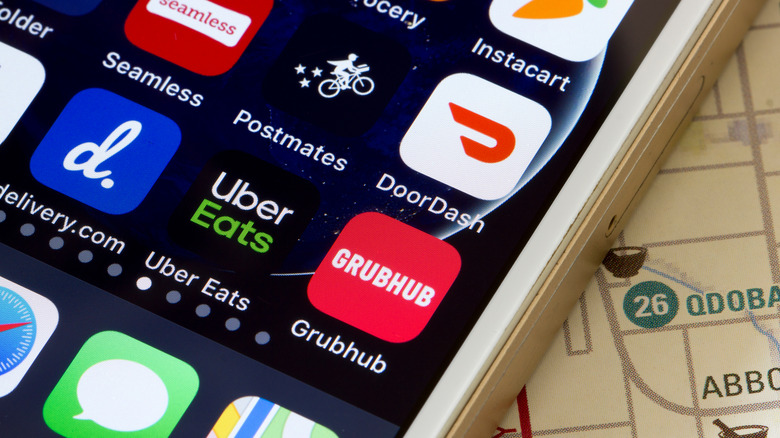This Surprising Expense Is Adding Up For Remote Workers
More employees have been working remotely during the Covid-19 pandemic, and that shift from in-office to home office has affected eating habits. Whereas pre-pandemic people would often use their lunch breaks to escape the office for an hour to eat lunch at a sit-down restaurant with colleagues, now those in remote settings are mostly either cooking homemade meals or ordering delivery. Titans of the food delivery service industry have stepped in to fill the void when people working from home want a meal delivered to their residence. Restaurant Business shared that remote workers' top three choices for ordering delivery were the usual suspects of Uber Eats, DoorDash, and Grubhub.
Many remote workers who buy lunch through these third-party apps appreciate the convenience of quickly ordering food from their phones, especially when the cupboards are empty or they don't have time to cook. You can even tip your deliverer ahead of time and request contactless delivery to avoid human interaction throughout the entire process. But there is a price to be paid for this accommodation, and it can be quantified.
The price of convenience
On average, a meal ticket from one of the big three delivery apps — Uber Eats, DoorDash, and Grubhub — sets your wallet back $18.20, $14.27, and $12.88, according to a survey from Skynova. Meanwhile, preparing lunch at home costs a more affordable $6.48. Part of the issue is that these food delivery service companies typically request between 15% to 30% of the meal price from restaurants they contract with, which drives these establishments to either increase their prices and risk angering customers or losing money out of the deal. They also tack on customer delivery and service fees (via McKinsey & Company).
But expensive or not, food delivery services aren't likely to go anywhere. The market is worth more than $150 billion worldwide, and in the United States, they more than doubled their business during the pandemic. Additionally, job searches conducted over the past couple of years indicate that interest in remote work remains strong. According to the economic research company Glassdoor, the share of job searches conducted for remote work opportunities grew 360% between June 2019 and June 2021. With no end in sight to the pandemic, remote workers may continue to value the convenience of food delivery services and pay exorbitant fees and surcharges to deliver that sandwich.

